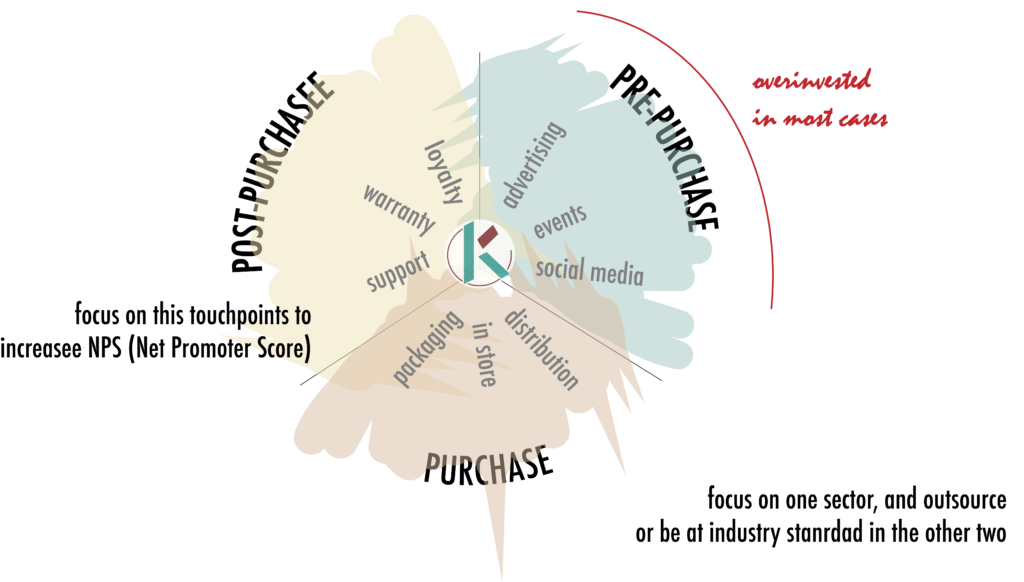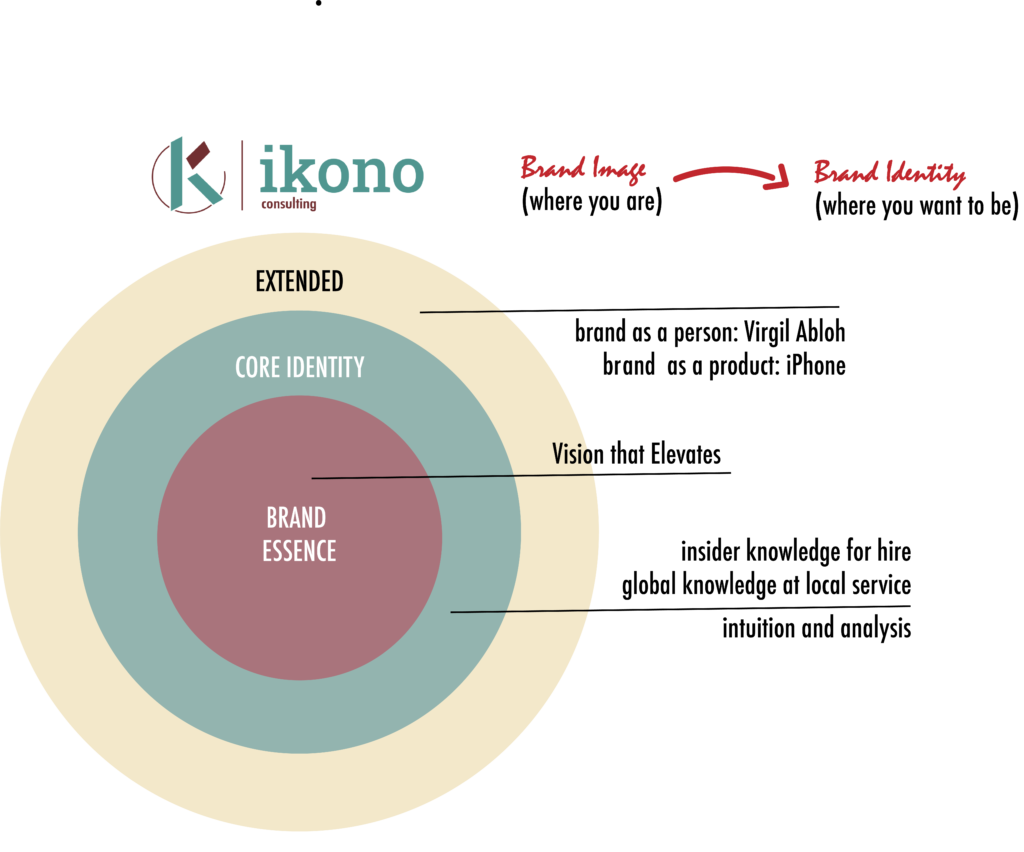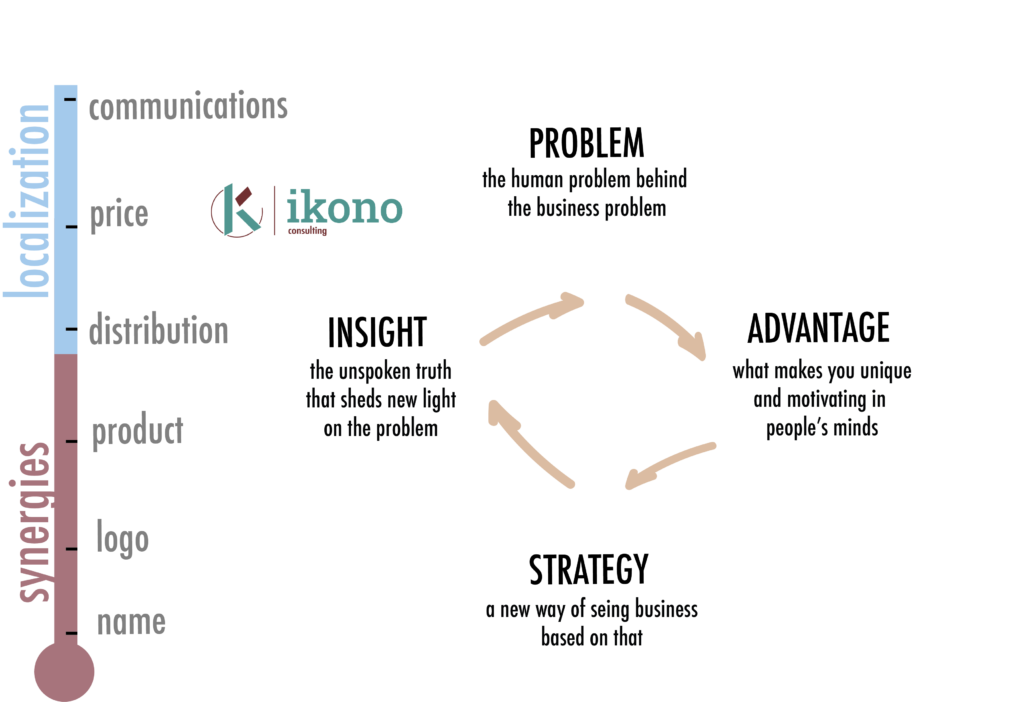The essence of strategy is to convince your competitors not to invest in areas of strategic importance to you
Why a Brand Strategy is important?
A Brand is the set of beliefs and feelings tied to a product or organisation: companies try to steer such intangible associations by having control of the narrative around their trademarks to project the most credible possible image that consumers will want to subscribe to.
As the sociological landscape of any given market is constantly evolving and fluid by nature, some essentials remain consistent and applying the right marketing strategy for a given case can result in improved brand recognition that allows for seizing superior margins and market share.
“Deliver above-market margin and justify it in the consumers’ eyes”
The framework of improving a product’s margin is based on the three lines of cost to produce, price that we are able to charge and perceived value to the buyer. Traditionally massive manufacturers tend to leverage economies of scale to reduce cost and gain market share, niche lifestyle brands, on the other end, cannot rely on large volumes and should rather focus on raising the perceived value to the consumer, as the price they can charge:

In the automotive industry, for example, manufacturers like Ford position themselves as “more for less” options giving the highest value for the lowest price.
Ferrari. On the contrary, purposely creates scarcity by producing limited edition cars with long waiting lists that signal exclusivity and luxury: the first car manufacturer has a gross margin of around 8%, and the second above 50%.
In the US there are 3000 Ford dealerships and only 27 Ferrari dealerships.
Having a well-defined brand strategy serves the organisation internally as well, defining boundaries and guidelines for resource allocations and decision-making. The nature of the brand can serve as a sort of overarching value across different business propositions and keep all the stakeholders aligned.
The benefits of having a strong brand are well documented, with 75% of consumers reporting trusting the brand they are loyal to more than more trendy or technologically advanced new ones
What are marketing touchpoints?
A touchpoint is a specific moment or event in the timeline of the consumer’s interaction with the brand: these is not limited to the different pre-purchase advertising channels in which the potential buyer is faced with the promoted brand, but rather include purchase and post-purchase events such as the return policy, customer support and service.
Unexperienced business leaders equate marketing with the pre-purchase phase and advertisement, but the truth is most of the associations around a brand are built in later moments that are often overlooked and therefore offer many opportunities of differentiation where a winning marketing strategy for lifestyle brands can be shaped.

Pre-purchase
This is the stage at which advertisement and PR create awareness and intent to onboard a brand in the mind of the consumers, this is the realm of traditional “top of funnel” communications.
Events and sponsorships fall into this category, as well as social media and hype-generating activities.
Purchase
Or the events in immediate proximity to the actual purchase, include distribution, packaging, store design and experience as well as user-generated content and user reviews.
Much has been said about the “retail apocalypse” and the death of the traditional store, confronted with e-commerce, but as a matter of fact, for many high-ticket purchases, consumers still prefer to visit showrooms and get personalised advice from human staff.
Store design, including music, smell and staff remains at the core of the value proposition of many lifestyle brands such as Apple and COS
Post-purchase
Or what happens after the customer has onboarded your product, this will determine whether or not they will become loyal customers and advocate the product in their network with Word of Mouth. Loyalty programs and warranties, as well as top-notch customer service, are all items in the toolkit of savvy marketers that help build solid brands that outperform the competition
How to differentiate a lifestyle brand?
Differentiation is the Northstar of successful branding efforts in today’s crowded market space: every product category has multiplay players competing for the same customers and only the ones who can clearly articulate a structured unique selling proposition are remembered and sought after.
Any efforts aimed at differentiating a brand from its competitors, at any rate, should not lose sight of its relevance to the target audience. Ultimately if our differentiation factors make our product too niche, seizable chunks of the total addressable market will stop identifying with us and market share will be lost.
Differentiation and Relevance can therefore be a threat to each other, the balance of the two lies in creating an association specific enough that the core target audience resonates with, but without excluding potential buyers that might feel marginalised.
“Highly relevant to a small segment beats undifferentiated to a wider total addressable market”
Finally, your unique selling proposition besides being differentiated and relevant should be sustainable.
What can you do that your competitors cannot easily copy is the question to answer here, as soon as something works, other players will try to copycat it, it is only through intellectual property and proprietary innovation that you can raise walls around your positioning in the lifestyle product space.
Besides legal Barriers, Unique strategic assets such as superior locations, human talent and trade secrets can be leveraged to block out competitors. A strong brand is one of these tools
The sooner you move into a new growing niche, the better in terms of building barriers to entry: early leaders have the time to seize and monetise a chunk of the market and later invest in top-notch talent to keep their edge. Seizing market shares in a crowded mature market is a lot more expensive.
A monetisable customer base will also grant you the cheap capital access necessary to perform acquisitions and keep expanding and improving the product, further cementing your leadership
What does brand identity mean for lifestyle products?
Often seen as an ethereal and overly abstract concept, brand identity is essential in keeping a consistent definition of what your trademark is and isn’t: having it laid out in detail is an exercise that will pay off.
Your brand identity is the list of aspirational associations that bring your brand to life
In order to have a realistic picture of the status quo it is beneficial to conduct a brand audit or map the existing associations, both positive and negative that are currently tied to your name, by conducting an internal and external interview: it is from research that this project starts.
This will enable us to identify the negative associations and act upon the new insights, it is a best practice in managing every brand, both commercial and professional to start by minimising the flaws, as those are the ones that the audience remembers and discusses the most.
After that, we can finally focus on elevating the positives, these existing positive associations tied to your brand image are the centrepiece from which you will start building your brand essence, they should stay a bit aspirational, and slightly out of reach.
You are striving to make your customers feel like what they associate your brand positively with

The Brand Essence
The first thing that comes to mind when you think of the brand, is aspirational, simple and positive: here you put what your brand ultimately stands for
The Core Identity
Provide some texture and context to the essence and helps differentiate from similarly positioned brands: which attributes can you better sustain being compared against your competitors, while keeping you differentiated in a relevant to the audience manner?
Extended Brand
Further associations that define the brand as an object for example, or a person. This is ultimately related to symbols that personify the brand such as Disney’s Mickey Mouse ears or Netflix starting tune – keep it unique.
Not to overlook is also the factor of the “brand as an organisation” – with companies increasingly being judged as how they are as places to work and in general what they stand for.
Signalling quality in lifestyle products
Quality cues are (apparently) minor details that can be deployed with minimal investment but in the eyes of the consumers signal the superior quality of a product or service. For example, a hotel chain offering free freshly baked cookies or having champagne for free during an event, such is meant to be remembered and talked about.
Pricing is the most classic quality cue, where if a product is more expensive than average, the consumers will instinctively think it is of better quality even without having conducted too much research: there is space in every category for a premium brand and if none is present in your niche you can unlock those margins by launching or positioning your lifestyle product brand.
Country of origin is another powerful soft-power projecting attribute, design from Italy, wine from France and cars from Germany are perceived as more credible in absence of other details, what product can enjoy the positive associations of your country?
Another factor signalling quality is scarcity, with exclusive brand purposely limiting their production in order to reach a status of hard to reach. Which other partners could you collaborate with in creating a limited edition that will raise your brand image?
Climb the ladder and take it with you by excluding your competitors from a specific positioning
Brand architecture and internationalisation
As the company grows and develops across different product lines, a common discussion arises around whether to create secondary brands around different propositions or keep all products under the same trademark. Different approaches are ideal for different scenarios and come with pros and cons.
Masterbrand:
Extends across different product lines and categories, that are traded under a single consistent brand (also defined as branded houses). This strategy unlocks substantial synergies in budget allocation but also comes with the risk of reputational damage in one product line spilling over into the other ones
Sub-brands
Here the main brand is kept and sided with a smaller sub-brand to leverage the goodwill of the main trademark while providing a well-defined differentiation of the product line.
Endorsed brands
A bit further away distanced from the main brand, here the sub-brand is mentioned first (Polo by Ralph Lauren) in order to seize some of the positive image of the principal while keeping a well-distinct position in marketing. This tactic can be used while transitioning into a new industry by using a strong name, before making the new brand fully independent and self-sustained once it reaches a certain recognition
For internationalisation, a winning model is one of visualising the different customer-facing elements of your brand in a thermometer, with a freezing point below which the elements remain the same across regions, and above that can be localised. (Name, logo, product, distribution, price and communications namely)
Typically MacDonald’s has the same logo everywhere, but serves different products at different price points across the diverse markets it operates in, a degree of brand localisation allows to give more granularity to the initiatives and face the local competitors better, while keeping the synergies that the global brand enables.
Lifestyle product brands tend to have a higher freezing point, as the global luxury consumers are more homogeneous and share similar tastes and preferences, whereas mass consumption brands as in the FMCG space are more localised in trying to tender to local costumes.
Conclusions
Developing a brand strategy for lifestyle products can be a challenging and rewarding activity that sets the tone for every other marketing enterprise regarding the business. With the right frameworks and knowledge, this is a unique opportunity to outpace the competition and cement the right imagery in the hearts and minds of the right consumers that will subscribe to our experiences.

In life and business, build a solid brand that signals quality and reliability by addressing crises, minimising negatives and maximising positives and making your decisions based on data.
Is hard to read a label from inside the bottle
Before taking any decision, consult with as many experts as possible: at Ikono we service our clients with highly tailored brand consulting that takes into account all the variables involved and give you the confidence to make the right decision. Get in contact with us for an assessment of your status quo.









